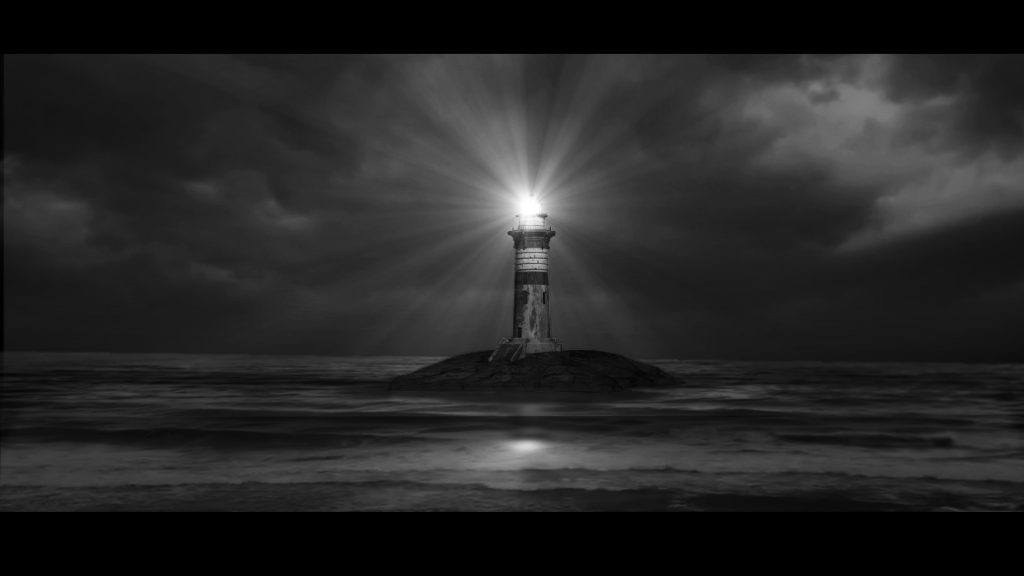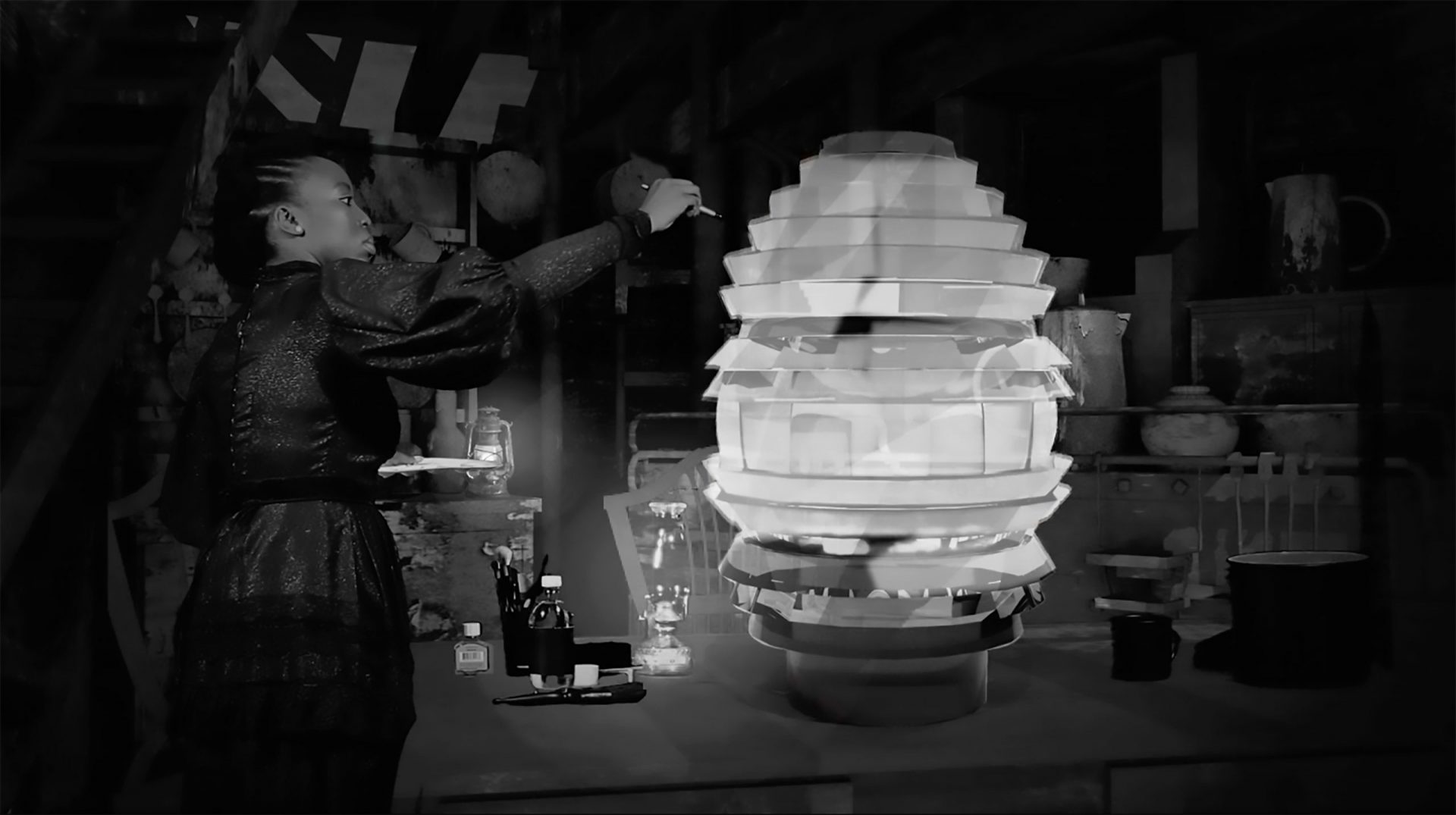October 2021 (TBC)
The Georgian House Museum, Bristol
7 Great George St, Bristol BS1 5RR, United Kingdom
‘Dipina tsa Kganya (2021) features two performances informed by a notion of healing, enacted through acts of naming and cleansing.
The word dipina means ‘songs’ in my mother language of seSotho. The song referred to is that of my family clan names, traditionally passed down through oral tradition. Additionally, the Sotho word for ‘light’: kganya – is in the etymology of my last name: Kganye.

A central visual component is the lighthouse featured in the middle channel of the video work. A light beam, in perpetual motion, casts light onto the surrounding ocean scene and in turn creates shadows in the two peripheral channels of the work. In the first or left video channel, a lighthouse keeper appears as a custodian of this light, tending to it by continually cleaning the bulb – a light source that symbolically guides those lost at sea. The song featured in the work (composed by musician Thandi Ntuli) plays from a large, custom-built Polyphon music box, which is hand cranked in the third or right video channel.
These performative gestures are in conversation with the southern African practice of the ‘praise-singing’ of clan names as a way of passing down the origins of the family story as an act of resistance to historical erasure, to ensure its unwritten continuity.

Lebohang Kganye was born in 1990 in Johannesburg, South Africa, where she currently lives and works. Kganye is currently doing her Masters in Fine Arts at the University of the Witwatersrand. Notable awards include the Grand Prix Images Vevey 2021/22, the Paulo Cunha e Silva Art Prize (2020) and Camera Austria Award (2019).
Kganye is currently participating in major museum group exhibitions in 2021 including: ‘Family Affairs. Family in Current Photography’ at the House of Photography in Deichtorhallen, Hamburg and ‘The Power of My Hands’ at Musée d’Art Moderne de Paris. She has exhibited her work extensively within curated group exhibitions and biennales including: ‘Afterglow’ Yokohama Triennale (2020); ‘Africa State of Mind’, a travelling exhibition presented at the Royal West of England Academy (2019 – 2020), the Museum of African Diaspora, San Francisco (2019) and the Impressions Gallery, Bradford (2018); ‘Recent Histories’, a touring exhibition of the Arthur Walther Collection at Huis Marseille, Amsterdam (2018–2019) and ‘Give Me Yesterday’ Fondazione Prada, Milan (2016)South African artist Lebohang Kganye, has collaborated with The Georgian House Museum to create an installation as part of Bristol Photo Festival. The black and white three-channel video installation offers a response to the violence of historical erasure of names and oral traditions. The house was once home to a sugar trader and his enslaved staff. Dipina tsa Kganya: Leave the light when you leave for good invites us to reflect on the legacy of colonialism as a shared history.

The Georgian House Museum
The installation will be on display in the Drawing Room of The Georgian House Museum. Following the fashions of the time, the Drawing Room was on the first floor, at the front of the house, with three large floor to ceiling windows. As the grandest room in the house, it would have been set with the family’s best pieces of furniture and paintings, possibly including a carpet. Here, evening guests might have been entertained by musical performances or amused at card parties, while day time visitors would have taken tea with the ladies of the family.
The house was built, between 1788 – 91 at number 7 Great George Street as the city home of John Pinney, a wealthy sugar planter and slave owner, and his family. Pinney inherited sugar plantations on the Caribbean island of Nevis, and the family’s wealth was founded on sugar grown and harvested by an enslaved workforce. Now the Georgian House museum, the house is presented as it might have looked at that time, with rooms revealing life above and below stairs.

